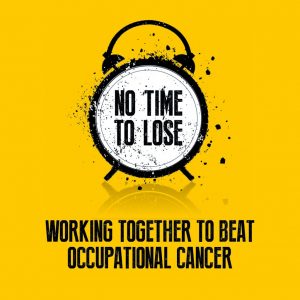 With the recent heat waves, thermal comfort in the workplace is now becoming something of a challenge for many employers. Whilst there is no maximum workplace temperature specified in the UK, the Workplace (Health, Safety and Welfare) Regulations 1992 state that workplaces shall be maintained at a ‘reasonable’ temperature. What is ‘reasonable’ will depend upon the nature of the work, but according to the HSE, an acceptable level of thermal comfort lies somewhere between 13°C and 30°C.
With the recent heat waves, thermal comfort in the workplace is now becoming something of a challenge for many employers. Whilst there is no maximum workplace temperature specified in the UK, the Workplace (Health, Safety and Welfare) Regulations 1992 state that workplaces shall be maintained at a ‘reasonable’ temperature. What is ‘reasonable’ will depend upon the nature of the work, but according to the HSE, an acceptable level of thermal comfort lies somewhere between 13°C and 30°C.
Workers likely to be most at risk include catering staff, outdoor workers e.g. horticultural workers, maintenance personnel, process workers and employees who must wear personal protective equipment (PPE) such as breathing apparatus or impermeable clothing. Employees working in offices which do not have air conditioning are also likely to be affected by hot weather.
It is important to continue wearing PPE during extreme temperatures. However, encourage staff to remove them during break times to cool off, sit in the shade or a cool area and drink plenty of fluids, this will help to reduce heat stress. Heat stress is where the body is under stress from over heating. Heat related illnesses include heat cramps or heat stroke, each with its own symptoms and treatments. Symptoms can range from profuse sweating, heat rash, fainting, loss of concentration.
Your risk assessment must take into account factors such as temperature to protect your employees, as well as helping you stay on the right side of the law.
If you require advice please contact us.
In the past PPE was governed by (EU) 2016/245 – it is now being implemented as a legally binding regulation, with some amendments. For example – hearing protection has been moved from category II to Category III – essentially it has now been classified as more important to protect your teams hearing.
PPE Category Classifications
| PPE Category | Category Description | Activity | Above the neck PPE product examples |
| Category I | Simple PPE (PPE designed to protect users against minimal risks) | Placing product on the market – manufacturers self-declaration | Sweatbands Cold Weather Hood System Sun Capes |
| Category II | Intermediate PPE (PPE not covered within category I or III) | Initial Product approval | Safety spectacles Industrial helmets Bump caps |
| Category III | Complex PPE (PPE falling under this category includes exclusively the risks that may cause very serious consequences such as death or irreversible damage to health) | On-going surveillance through testing or factory auditing | Respiratory PPE Industrial helmets claiming Molten Metal and Electrical Resistance(EU) 2016/425 PPE Regulation change: Hearing Protection |
PPE is equipment that will protect the user against health or safety risks at work. It can include items such as gloves, safety helmets, eye and ear protection, high-visibility clothing, safety footwear and safety harnesses. It also includes respiratory protective equipment (RPE)
A risk assessment will help to identify where you need to look at certain risks and these control measures in more detail. These control measures do not have to be assessed separately but can be considered as part of, or an extension of, your overall risk assessment. It is the Last Resort to use PPE, other avenues must also be considered.
Walker Health and Safety Services Limited have teamed up with Active Workwear to bring you a PPE info graphic. I would recommend that you issue to employees and display on noticeboards as the information could be beneficial to them.
Contact Walker Health and Safety Services should you require further information.
null
null
 The British Association of Dermatologists (BAD) currently runs a national campaign around skin cancer called Sun Awareness, which includes national Sun Awareness Week in May. This campaign is overseen by the BAD’s Skin Cancer Prevention Committee, comprised of leading medical professionals with expertise in skin cancer, vitamin D and public health messaging.
The British Association of Dermatologists (BAD) currently runs a national campaign around skin cancer called Sun Awareness, which includes national Sun Awareness Week in May. This campaign is overseen by the BAD’s Skin Cancer Prevention Committee, comprised of leading medical professionals with expertise in skin cancer, vitamin D and public health messaging.
Sun Awareness Week (6-12 May) encourages people to regularly self-examine for signs of skin cancer and teaches them about the dangers of sunburn and excessive tanning.
Worldwide, non-melanoma skin cancer is the most frequently diagnosed cancer, with an estimated 2-3 million cases registered every year.
Ultraviolet radiation (UVR) is a risk that particularly affects outdoor workers, who receive 5-10 times the yearly sun exposure of indoor workers.
Walker Health and Safety Services Limited is supporting Sun Awareness Week and the Institution of Occupational Safety and Health’s (IOSH) global campaign to tackle occupational cancer – ‘No Time to Lose’, which aims to get carcinogenic exposure issues more widely understood and help businesses take action by providing free practical resources.
Find out more about the campaign at www.notimetolose.org.uk/sun-awareness, follow @_NTTL on Twitter, and use the hashtag #SunAwarenessWeek.
Resources for your company can be downloaded here. https://www.notimetolose.org.uk/free-resources/resource-library/pack-2-solar/
Also, contact us for further information.
PPE is designed to protect workers from workplace hazards and risk but PPE doesn’t last as long as you’d think. Once you have the equipment, your job isn’t over! It all depends on how often your PPE is used and in which conditions. PPE is provided by employers and needs to be inspected regularly to measure and test safety, but who should be in charge of carrying out those checks and determining when replacement is necessary? Is it the employer? The department manager? Or should there be employee PPE responsibilities? The easiest answer is that there should be a dedicated employee or team of employees who are responsible for each type of equipment.
Assigning an important task to your employees helps them take ownership of their well-being and safety. Of course, ultimately, it’s the employer’s responsibility to provide a safe work space through correct health and safety procedures and measures but having someone responsible for routine checks is a good idea with a more overarching view taken on, say, a quarterly basis.
Consider having a monthly check on all PPE that is given to employees. Inform employees that any damaged items are reported immediately, and all damaged equipment is replaced before the employee returns to work.
A Good PPE Program:
A brief guide can be found here http://www.hse.gov.uk/pubns/indg174.pdf
Contact us for further information.
EN ISO 20471 clothing, also known as high visibility clothing, is produced for one purpose, which is to enhance visibility and thus to keep people safe when they are working on roads, runways, construction sites or in large warehouses, where vehicles, forklift trucks, aircraft and the like are operating.
Nevertheless, not everyone is aware of how little it takes for safety to be compromised. Even the smallest modifications to clothing can have fatal consequences. So far, too often, people make mistakes when dressing themselves or their employees.
All EN ISO 20471 clothing is certified in classes from 1-3 based on how visible the clothing is.
Depending on the nature of the job and the speed of traffic around the employee, the Danish Working Environment Authority requires the use of certified visible clothing on one of these classes.
If you make just the slightest modification to part of the clothing, it will no longer provide optimal protection.
This can be fatal!
We have therefore collected a list of the mistakes most commonly made by people, and what you should bear in mind when your work requires you to be particularly visible.
1. The Jacket is removed
All of your clothing must meet the requirements in order to be approved. If, for example, you remove your jacket and walk around in a t-shirt, you lose your visibility. You are therefore no longer certified in your safety class.
2. Work clothing gets too dirty
Too much dirt on the fluorescent areas of the clothing reduces visibility. This makes it more difficult to see you, so your clothing no longer meets the applicable safety requirements.
3. Trousers are tucked into boots
A common sight is for people to tuck their trousers into their boots, either because the trousers are a little bit too long or because they prefer it that way. This is, however, not appropriate as the boots can easily cover reflexes, which then lose their effect.
4. Clothing washed incorrectly
If you wash the clothing yourself there is a greater risk that it is washed incorrectly, which damages both reflexes and fluorescent areas, reducing the safety effect. The clothing can be damaged by the temperature, detergent or other textiles in the washing machine. Companies should ideally have a professional laundry solution, to make sure that employees clothing is washed correctly, and therefore still meets the standards in safety classes after washing.
5. The safety of the clothing is not checked on an ongoing basis
The function and the safety effects of the clothing must be checked in order to make sure that it is still good enough. When the clothing is washed in a professional laundry, it is checked and if necessary new reflexes are applied in order to extend the useful life of the clothing.
6. Shirt hanging over the trousers
Clothing must be worn as intended. This means that if there is fluorescent material around the lining or the pockets on the clothing, it must be visible all the time. You must therefore not let your shirt hang over the trousers and cover the colour. This causes the clothing to lose it’s full effect and it’s certification.
7. Holes appear in the clothing
The clothing must always be intact. Even a small hole in your trousers or a logo sewn on can remove some of the fluorescent material. This means that the clothing may possibly not meet the standard and is no longer certified in it’s class.
What ‘Class’ does your job require?
Contact Walker Health and Safety Services Limited if you require advice.